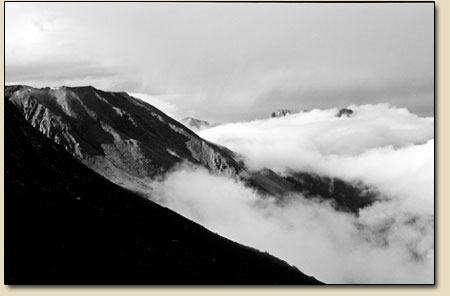|
| ||||
| Wilding the San Juans SideStory: San Juan Wilderness Bill at a glance
by Will Sands The San Juan Mountains could grow a little wilder in coming months. The region’s designated wilderness stands to grow by tens of thousands of acres, courtesy last week’s introduction of the San Juan Mountains Wilderness Bill. The effort is being hailed as a win-win by stakeholders, politicians and wilderness advocates alike. Signed into law in 1964, the Wilderness Act created the highest form of protection for America’s most pristine public lands. “A wilderness, in contrast with those areas where man and his own works dominate the landscape, is hereby recognized as an area where the earth and community of life are untrammeled by man, where man himself is a visitor who does not remain,” the Act reads. Since 1964, more than 109 million acres have been designated wilderness throughout the country, and Southwest Colorado boasts the South San Juans, Mount Sneffels, Lizard Head wilderness areas as well as the Weminuche, the state’s largest at 488,000. Last week, U.S. Red. John Salazar, D-Colo., took a step toward further enhancing the local wilds. By introducing the San Juan Mountains Wilderness Bill, Salazar moved to grow local wilderness by more than 33,000 acres and protect nearly 30,000 additional acres by other means. Upon introducing the bill, Salazar commented, “These are the lands that define the character and spirit of our great state and nation and as such, it is my honor today to introduce the San Juan Mountains Wilderness Bill.” Most significantly, the wilderness bill would safeguard some of Southwest Colorado’s most renowned viewsheds. The slopes of Mount Sneffels and Wilson Peak, two of Colorado’s most widely known fourteeners, would be forever off-limits to mining, logging and road building, according to the legislation. Jeff Widen, associate director of the Wilderness Society’s Wilderness Support Center, helped draft the bill and noted that it completes some missing pieces of the local puzzle. “The bill fills out some of the areas that were not included in previous wilderness designations,” he explained. “In the case of Mount Sneffels, the wilderness boundary ends at the top of the peak. This bill provides protection for the rest of the ridgeline.” The Salazar bill makes similar provisions for Lizard Head Peak, Wilson Peak
The Salazar bill makes similar provisions for Lizard Head Peak, Wilson Peak and the skyline stretching southeast above Telluride and Ophir. The bill would also make wilderness inroads into the Lower Dolores River Basin, creating the 8,614-acre McKenna Peak Wilderness Area. The McKenna Peak designation would create the first wilderness area in the Lower Dolores and protect a lower elevation wilderness, something that is largely missing in Colorado’s current inventory. Interestingly, one of the San Juan Wilderness Bill’s most important designations is not directly related to wilderness. More than 21,000 acres stretching from Sheep Mountain through the heart of the San Juans to the Ice Lakes Basin would gain protection as a special management area. Such a designation allowed the bill to “thread the needle” by offering permanent protection to the area, while respecting Telluride Helitrax’s historic heli-skiing operation. “Wilderness designations allow overflights, but no landings unless there’s an emergency,” Widen explained. “Since Sheep Mountain is the heart of Helitrax’s operations, a wilderness designation would have effectively put them out of business. But with a special management area, we can respect that existing use and preserve that region’s wilderness character.” The bill made a similar exception for the Hardrock 100 ultra-marathon, the annual trail running uber-race in the mountains around Silverton. While wilderness designations do not look kindly on commercial events, Salazar wanted to preserve the long-standing Hardrock and allow the race to continue in all areas designated as wilderness or special management areas in the legislation. “There’s no fundamental conflict between running and wilderness,” Widen said. “Luckily we couldn’t muster up very much heartburn over that.” At the heart of the San Juan Wilderness Bill was a grassroots effort to get all the players at the table and involved in drafting the bill. That up-front work should be the key to the legislation’s success, according to Widen. Art Goodtimes, San Miguel County commissioner, said he shares Widen’s optimism. Goodtimes was at the table from the beginning and anticipates that the additional public lands protection will be signed into law in the near term. “This wilderness bill was built from the ground up bringing together all stakeholders to produce a final bill that has a broad base of support,” he said. “I thank the Congressman for his work on this bill and look forward to working with him to secure its passage.” The Salazar bill must now secure a sponsor in the U.S. Senate before making its way through the Legislature to the president’s desk. However, Widen and the Wilderness Society have little cause for concern. “John Salazar and his staff have gone to extraordinary lengths to see that every stakeholder was at the table,” he said. “I’ve been doing wilderness bills for over 20 years, and this is as complete a vetting process as I’ve ever seen. That gives me confidence that there will be few roadblocks in the upcoming congressional process.” •
|



